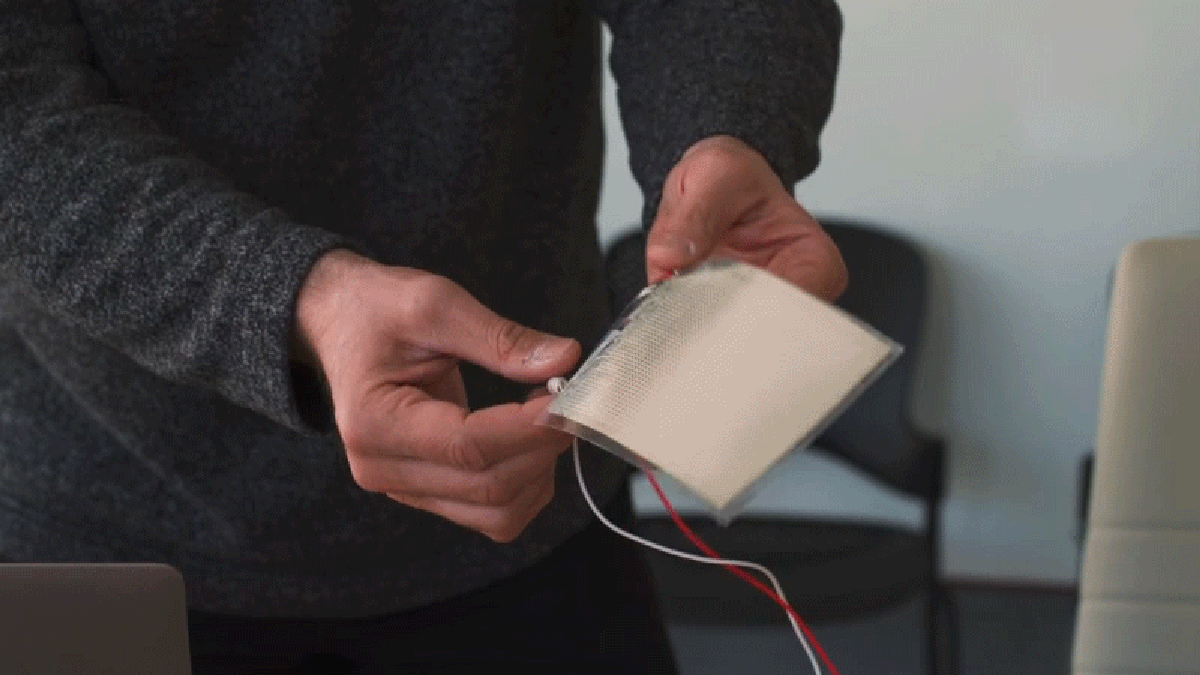
Instead of designing a thin-film speaker that requires the entire panel to vibrate, the researchers started with a sheet of lightweight PET plastic that they perforated with tiny holes using a laser. A layer of thin piezoelectric material called PVDF was then laminated to the underside of the sheet, and then the researchers subjected both layers to a vacuum and 80 degrees Celsius heat, which caused the piezoelectric layer to bulge and push through the laser-cut holes in the top layer. This created a series of tiny domes that are able to pulse and vibrate when an electric current is applied, regardless of whether or not the panel is bonded to a rigid surface. The researchers also added a few extra layers of the durable PET plastic to create a spacer to ensure that the domes can vibrate freely, and to protect them from abrasion damage.
The domes are just “one-sixth the thickness of a human hair” in height and move a mere half micron up and down when they vibrate. Thousands are needed to produce audible sounds, but the researchers also discovered that changing the size of the laser-cut holes, which also alters the size of the domes produced, allows the sound produced by the thin-film panel to be tuned to be louder. Because the domes have such minute movement, just 100 milliwatts of electricity were needed to power a single square meter of the material, compared to more than a full watt of electricity needed to power a standard speaker to create a comparable level of sound pressure.
The applications for the thin-film speaker material are endless. In addition to being applied to interiors like office walls or even the inside of an airplane to cancel out unwanted noises, an entire car could be wrapped in a speaker, making it easier to alert pedestrians that an otherwise silent electric vehicle was approaching. The researchers believe the technology could even be used for ultrasonic imaging, tracking the movements of people in a given space, or even as a futuristic display technology by covering all those tiny domes in reflective surfaces, similar to how Texas Instrument’s DLP technology works. But the one thing the researchers can’t foresee is when we might actually see this technology hit the market.
